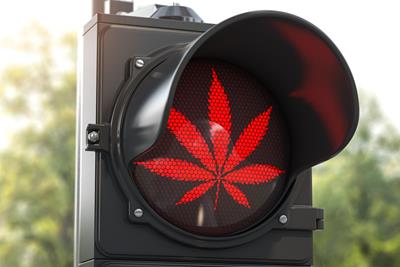
Thursday April 14, 2022
By Trevor Ross
 420 Culture
420 Culture
When cannabis is consumed on a regular basis, the same dose inevitably offers reduced effects. This is an increase in what is called “tolerance,” and it is not unique to cannabis. Consumers of other drugs, including Selective Serotonin Reuptake Inhibitors and pain killers, also experience increases in tolerance. These effects can be reversed by temporarily abstaining from the drug in what is called a tolerance break, or “T-break.”
So how long should a tolerance break be? The length of an effective tolerance break is determined by both the amount and frequency of consumption. Casual or infrequent users can significantly lower their tolerance with breaks anywhere from 5 days to 2 weeks. But heavy cannabis consumers who consume everyday may need to abstain for as long as 4 weeks.
This article offers a guide for users of all levels preparing to take a weed tolerance break for up to four weeks, including what to expect, and offering tips on how to prepare and manage it.
Preparing to Take a Tolerance Break

It’s important to begin a tolerance break with clear intentions and a structured time frame. Taking a tolerance break for “a week or so” will likely fall apart as soon as you encounter a good reason to smoke – because, like, what are you supposed to do, watch the Super Bowl sober? However, if you’ve marked a clear day on your calendar, and you actually want to take this break, then resisting the siren’s call becomes much easier.
Week 1
As stated above, the good news is that cannabis is not chemically addictive, and so will not come with physical side effects like pain or tremors. The rest of the news is that it will inevitably come with some psychological side effects, usually irritability and depression, as your mind searches fruitlessly for what has become an expected part of its chemical diet. Thankfully, this only lasts for about 48 hours.

The remaining challenge of the first week is a series of firsts without weed — the first day of work, first evening watching TV, first night going to bed, or the first weekend all without cannabis. Whenever you would usually reach for the pipe or the pen, the first time not doing that is going to be a challenge. These motions and rituals are habitual, and habits can be harder to break than chemical addictions.
Keep in mind that at this stage, even if you did smoke, it wouldn’t do as much for you as you’re hoping. That’s why you’re taking the break.
Week 2
By week two, most of the “firsts” are behind you and the initial rapids let out into the placid sea, though there may still be some lingering depression. At low doses, cannabis increases serotonin levels, but at high doses – which you’ve likely been taking if you need a break – cannabis depletes serotonin. So any depression at this stage can likely be attributed to the brain readjusting its own serotonin regulation to a new normal, without the aid of external influences.

The other challenge this week is that your sleep schedule and appetite may still be erratic. This is only because your body is trying to achieve a new homeostasis without cannabis there to regulate things like circadian rhythm (sleep schedule). Unfortunately, not sleeping or feeling sudden fits of hunger can cause problems in their own right, especially during long work days. It’s worth remembering again that even if you did reach for the pipe, it wouldn’t do much for you.
For a seasoned smoker aiming for a month-long T-break, 10 days isn’t much. The first few hits would feel great, but within a couple days your tolerance would be right back where it was, which brought you right to where you are now, taking a break.
Week 3
Week three can be frustrating because it is, inherently, a purgatorial condition of being over halfway done, but with a full week still ahead. The good news is that by this stage the mind and body have almost entirely readjusted to operating without cannabis, offering a new perspective for reflection.
While the emerald prism of cannabis undoubtedly offers a unique kind of clarity, its casual use can also keep consumers in that prism, turning what once felt like revelation into routine. It takes two weeks of self-discipline to live comfortably outside of that prism again, and it would be a shame to spend the next two weeks only longing to get back in.

Weeks three and four are a hard-earned opportunity to examine yourself, your habits, your goals, thought processes, principles, etc. This is not to say a full existential examination is required (though by all means, feel free), but at the very least it’s an opportunity to remember why you use cannabis to begin with, where you still prefer to live with it, and where you may be able to live without it.
Knowing this will be useful when you do begin consuming again so you can limit your intake and manage your tolerance more effectively going forward. This will help you avoid necessary T-breaks in the future, and maybe even help you enjoy more voluntary T-breaks.
Week 4
Week four is additional time to continue the work of establishing sober routines and habits. The challenge in this final week is just waiting out the clock, like a kid counting down the days until Christmas.
By this time, any withdrawal symptoms are a distant memory. Your tolerance is certainly lower than it was three weeks ago, and one hit would probably send you into the stratosphere. Why not carry on another week for good measure?
Final Thoughts
CBD is a great supplement during THC tolerance breaks. This non-psychoactive cannabinoid does not bind with CB receptors like THC, but rather raises the level of endocannabinoids like anandamide in the blood. It will not offer the instant relief that THC does, but when taken (particularly ingested) on a daily basis, CBD can offer some of the same effects over time, including reducing anxiety and regulating sleep. Because it does not interact with CB receptors the same way THC does, taking CBD will not raise or sustain your THC tolerance.

Finally, you know your body best. If you truly feel that cannabis is your best medicine, then indulging a little throughout the break won’t scuttle the whole effort. Even reducing your normal intake by half will readjust your tolerance to a lower level. The goal is to be as consistent as possible, but falling out of a yoga stance doesn’t render an hour of yoga useless. Simply get back in your stance and carry on.
Frequently Asked Questions:
Is a Tolerance Break Worth It?
Yes. Even breaks as short as 5 days can dramatically lower a user’s tolerance, though returning to normal use after a short break will rebound that tolerance more quickly. For regular users, the effects of a 2-4 week break will last longer.
Will a 5 Day Tolerance Break Do Anything?
Yes. Cannabinoid receptors begin to replenish in as little as 2 days, so 5 days is even more effective.
Is it Hard to Take a Tolerance Break?
Yes and no, based largely on intention. Users who want to take breaks generally find it easier than users who feel obligated to take breaks, or do so reluctantly. The first 48 hours are the hardest, followed thereafter by the series of “first” – first time going to bed without it, first time hanging out with friends without it, etc. But this is a matter of breaking habits, not chemical addiction.
Is a 2 Week Tolerance Break Enough?
Probably. A two-week tolerance is very effective for mild to moderate smokers, but frequent (i.e. daily) smokers will benefit more from a four-week break.
Have you taken a month-long tolerance break? Share your advice in the comments below!







